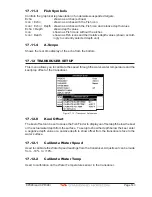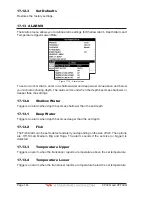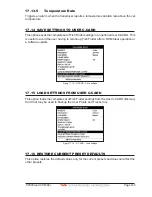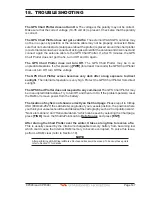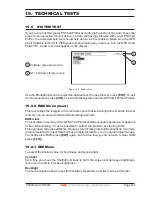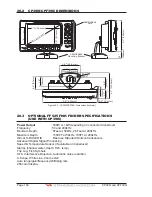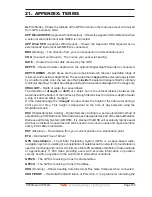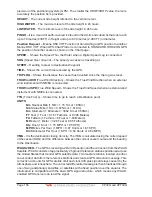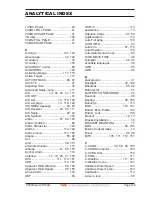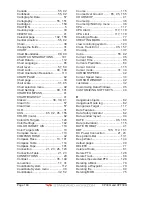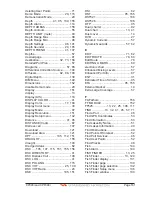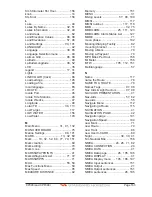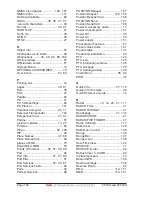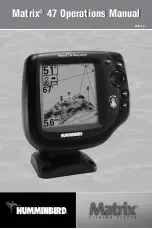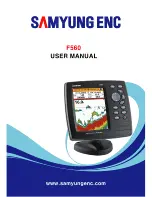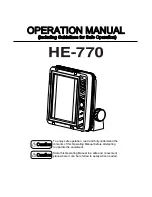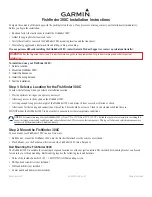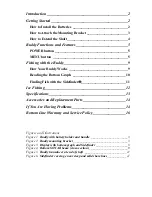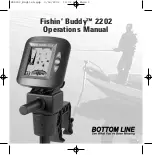
Page 156
CP390i and CPF390i
precision of the positioning system (GPS). The smaller the HDOP/VDOP value, the more
accurately the position fix is provided.
HEIGHT
– The current tide height referred to the vertical cursor.
HIGH WATER
– The maximum level of the tide height in 24 hours.
LOW WATER
– The minimum level of the tide height in 24 hours.
PINGO
– It is a mound of earth-covered ice found in the Arctic and subarctic that can reach
up to 70 metres (230FT) in Height and up to 600 metres (2.000 FT) in diameter.
Position Request
– Marine DSC VHF Function of transmitting a GPS position to another
Marine DSC VHF. When GPS Chart Plotter is connected to STANDARD HORIZON GPS
the position of another vessel is shown on the Chart page.
SPEED
– Shows the Speed Thru the Water when a Digital Speed Log is connected.
SOG
(Speed Over Ground) – The speed you vessel is travelling at.
STEER
– Heading to steer to destination Waypoint.
TIME
– Shows the current time received by the GPS.
TRIP LOG
– Shows the distance the vessel has travelled since the trip log was reset.
TRU Wind DIR
(True Wind Direction) – Shows the True Wind Direction when an external
wind instrument with NMEA is connected.
TRU Wind SPD
(True Wind Speed) – Shows the True Wind Speed when an external wind
instrument with NMEA is connected.
TTG
(Time To Go) – Shows time to go to reach a Destination point.
UNITS
Nm
Nautical Mile (1 NM = 1.15 Sm or 1.85Km)
Sm
Statue Mile (1Sm = 0.87Nm or 1.61Km)
Km
Kilometer (1 Kilometer = 0062 Sm or 0.54Nm)
FT
Feet (1 Foot = 0.167 Fathoms or 0.305 Meters)
FA
Fathom (1 Fathom = 6 Feet or 1.83 Meters)
Mt
Meter (1 Meter = 3.28 Feet or 0.55 Fathoms)
Kts
Knot (1 Knot = 1.15 MPH or 1.85 KPH)
MPH
Miles Per Hour (1 MPH = 0.87 Knots or 1.61 KPH)
Kmh
Kilometer Per Hour (1 KPH = 0.54 Knots or 0.62 MPH)
VMG
– It is the destination closing Velocity. The VMG is calculated using the current speed
of the vessel (SOG) and the difference between the current vessel course and the bearing
to the Destination.
WAAS 2D/3D
– The GPS is receiving a 2D or 3D position and the correction from the WAAS
Satellite. WAAS consists of approximately 25 ground reference stations positioned across
the United States that monitor GPS satellite data. Two master stations, located on either
coast, collect data from the reference stations and create a GPS correction message. This
correction accounts for GPS satellite orbit and clock drift plus signal delays caused by the
atmosphere and ionosphere. The corrected differential message is then broadcast through
one of two geostationary satellites, or satellites with a fixed position over the equator. The
information is compatible with the basic GPS signal structure, which means any WAAS-
enabled GPS receiver can read the signal.
Содержание CP390i
Страница 1: ......
Страница 5: ...Page 6 CP390i and CPF390i ...
Страница 15: ...Page 16 CP390i and CPF390i ...
Страница 29: ...Page 30 CP390i and CPF390i ...
Страница 43: ...Page 44 CP390i and CPF390i ...
Страница 53: ...Page 54 CP390i and CPF390i ...
Страница 67: ...Page 68 CP390i and CPF390i ...
Страница 75: ...Page 76 CP390i and CPF390i ...
Страница 83: ...Page 84 CP390i and CPF390i ...
Страница 87: ...Page 88 CP390i and CPF390i ...
Страница 109: ...Page 110 CP390i and CPF390i ...
Страница 145: ...Page 146 CP390i and CPF390i Figure 17 16 C Card Restore settings ...
Страница 147: ...Page 148 CP390i and CPF390i ...
Страница 153: ...Page 154 CP390i and CPF390i ...
Страница 157: ...Page 158 CP390i and CPF390i ...
Страница 168: ......


